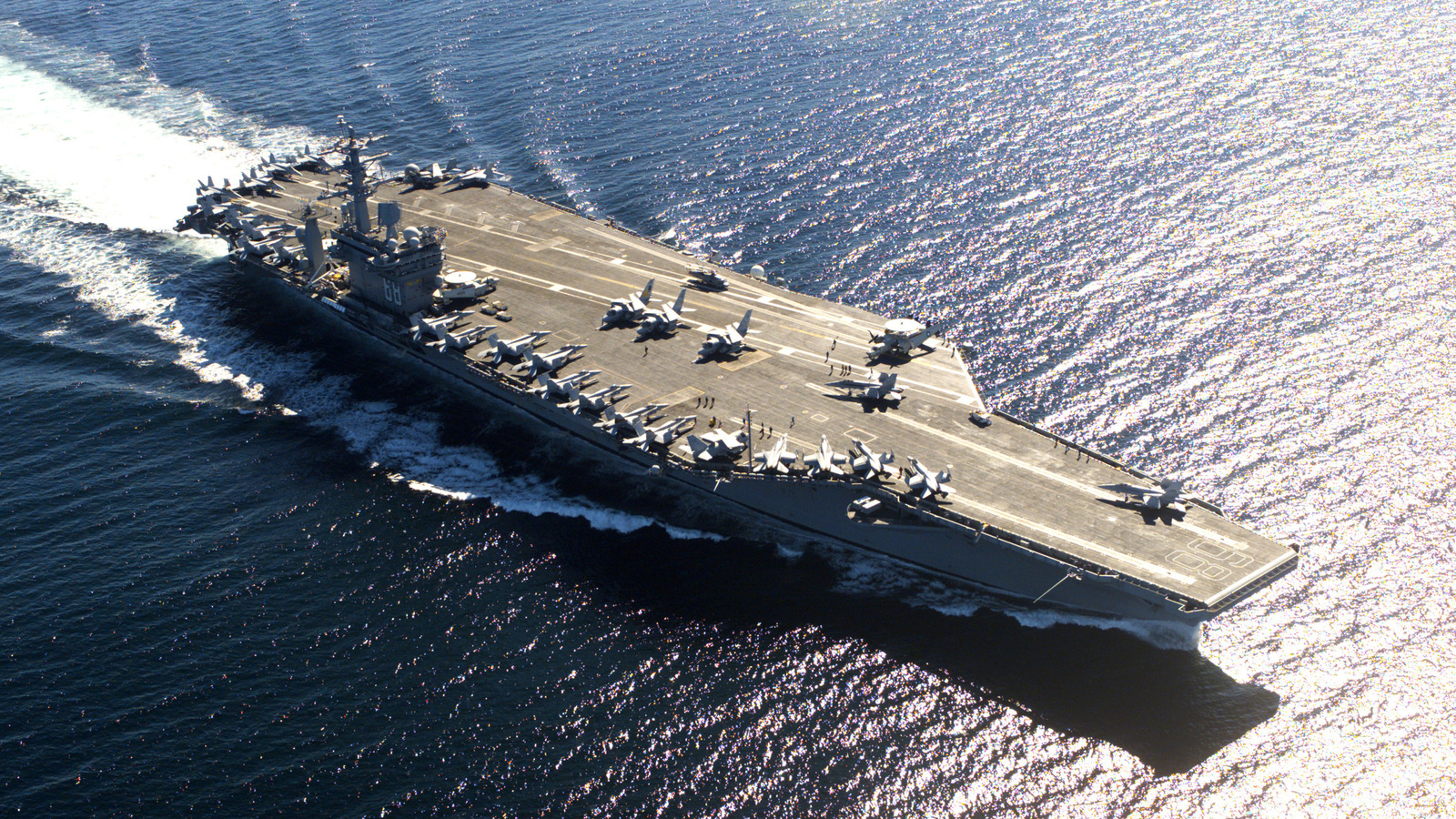Education
Discover the 14 Oldest Aircraft Carriers Still Serving Today

Aircraft carriers serve as the backbone of modern navies, projecting power and influence across the globe. As of now, there are 22 operational aircraft carriers worldwide, with the United States operating half of them. Among these vessels, several have remarkable histories, some dating back to the 1980s. This article examines the oldest aircraft carriers still in service today, highlighting their unique stories and contributions to naval operations.
Oldest Operating Aircraft Carriers: A Closer Look
The Liaoning, China’s first aircraft carrier, is the oldest foreign ship on this list. Originally built by the Soviet Union in the mid-1980s, it underwent extensive refurbishment before being commissioned into the Chinese Navy in 2012. Despite its modern appearance, the Liaoning remains rooted in 1980s technology, reflecting China’s strategic ambitions in naval power.
The USS Ronald Reagan began construction in 1998 and was commissioned in 2003. Named after the 40th President of the United States, it made headlines for its involvement in significant military operations, including a large-scale airstrike against ISIS in Somalia on February 1, 2025. Currently, the Reagan is undergoing maintenance at Naval Base Kitsap, with plans to return to active duty by 2026.
Another noteworthy carrier is the USS Harry S. Truman, which launched the largest airstrike in U.S. Navy history from its deck in 2025. The Truman, which began its service in 1998, has also faced operational challenges, including the unfortunate loss of F-18 Super Hornets that rolled off the flight deck in 2025, highlighting the complexities of maintaining such massive vessels.
The USS John C. Stennis is another significant carrier currently undergoing a comprehensive overhaul. Commissioned in 1995, it has been out of action since 2021 and is projected to return to service in 2026. Named after a controversial figure in U.S. history, its legacy is as complex as that of its namesake.
The USS Essex has distinguished itself through humanitarian missions, such as its deployment following the devastating 2010 Super Typhoon Juan in the Philippines. Commissioned in 1992, the Essex has also faced its share of challenges, including a collision with the USNS Yukon in 2012, resulting in the relief of its commanding officer.
International Contributions
The Italian aircraft carrier Giuseppe Garibaldi has played a vital role in international operations since its commissioning in 1985. While it was decommissioned in 2024, interest from Indonesia to purchase the ship and its Harrier jets may extend its legacy in a new context.
In Russia, the Admiral Flota Sovetskogo Soyuza Kuznetsov served as the flagship of the Russian Navy until its removal from service in 2017 for modernization. However, its refit has been stalled due to the ongoing conflict in Ukraine, leaving the Russian Navy without a flagship and reflecting the challenges of maintaining military readiness amid geopolitical tensions.
The USS Abraham Lincoln, which began construction in 1984, also faced misinformation challenges in 2024 when Houthi forces claimed to have damaged the vessel. While the attack did occur, the Lincoln remained unharmed, underscoring the complexities of modern warfare narratives.
Other notable carriers include the USS Theodore Roosevelt, which gained notoriety during the COVID-19 pandemic for its handling of an outbreak on board. The ship’s captain, Brett Crozier, was relieved of duty after sending a letter outlining safety concerns, a decision that led to significant backlash against Navy leadership.
Finally, the USS Dwight D. Eisenhower, commissioned in 1977, continues to serve despite being the target of misinformation regarding alleged attacks. Its storied history includes critical roles in various military operations, showcasing the enduring relevance of aircraft carriers in global security.
The oldest aircraft carrier still in service, the USS Nimitz, is approaching its retirement after nearly 50 years. Scheduled to decommission in 2026, it will be replaced by the new USS John F. Kennedy, part of the Gerald R. Ford class, marking a significant transition in U.S. naval capabilities.
As the global landscape evolves, the operational histories of these aircraft carriers reflect the changing nature of military engagement and the ongoing importance of naval power in national defense strategies.
-

 Technology5 months ago
Technology5 months agoDiscover the Top 10 Calorie Counting Apps of 2025
-

 Health2 months ago
Health2 months agoBella Hadid Shares Health Update After Treatment for Lyme Disease
-

 Health3 months ago
Health3 months agoErin Bates Shares Recovery Update Following Sepsis Complications
-

 Technology4 months ago
Technology4 months agoDiscover How to Reverse Image Search Using ChatGPT Effortlessly
-

 Technology1 month ago
Technology1 month agoDiscover 2025’s Top GPUs for Exceptional 4K Gaming Performance
-

 Technology2 months ago
Technology2 months agoElectric Moto Influencer Surronster Arrested in Tijuana
-

 Technology5 months ago
Technology5 months agoMeta Initiates $60B AI Data Center Expansion, Starting in Ohio
-

 Technology5 months ago
Technology5 months agoRecovering a Suspended TikTok Account: A Step-by-Step Guide
-

 Health4 months ago
Health4 months agoTested: Rab Firewall Mountain Jacket Survives Harsh Conditions
-

 Lifestyle5 months ago
Lifestyle5 months agoBelton Family Reunites After Daughter Survives Hill Country Floods
-

 Technology4 months ago
Technology4 months agoHarmonic Launches AI Chatbot App to Transform Mathematical Reasoning
-

 Technology3 months ago
Technology3 months agoUncovering the Top Five Most Challenging Motorcycles to Ride




















